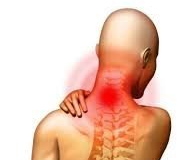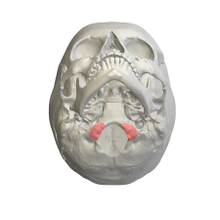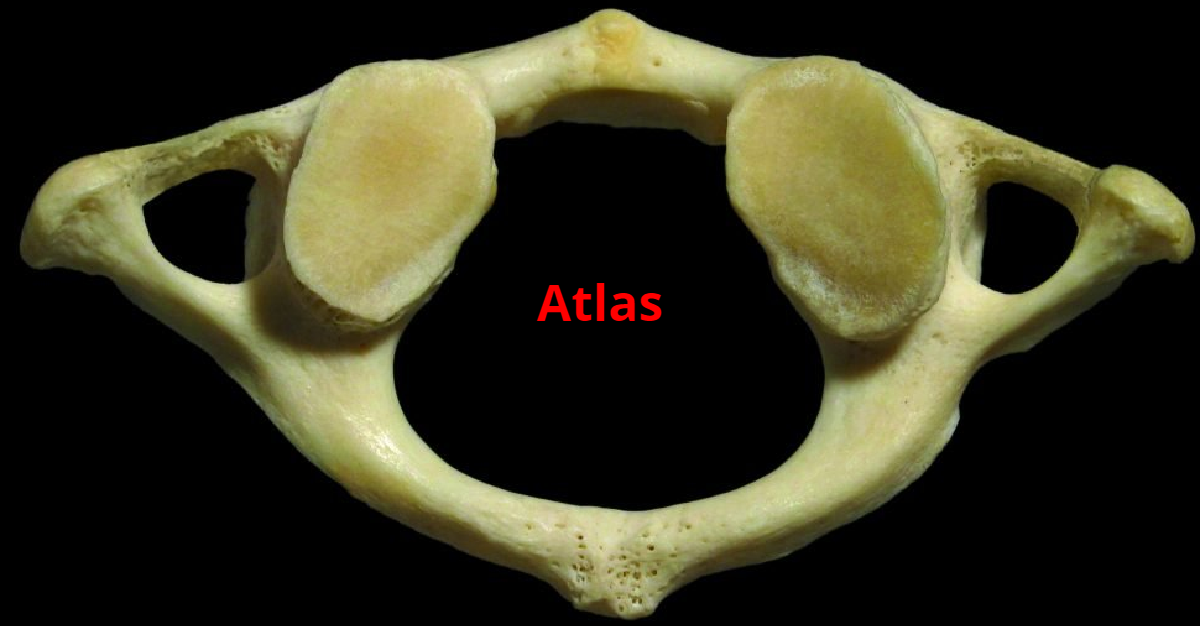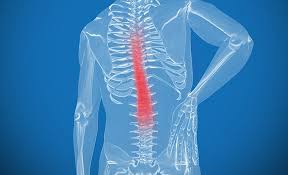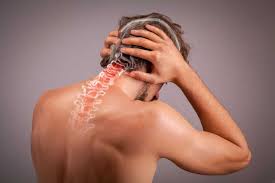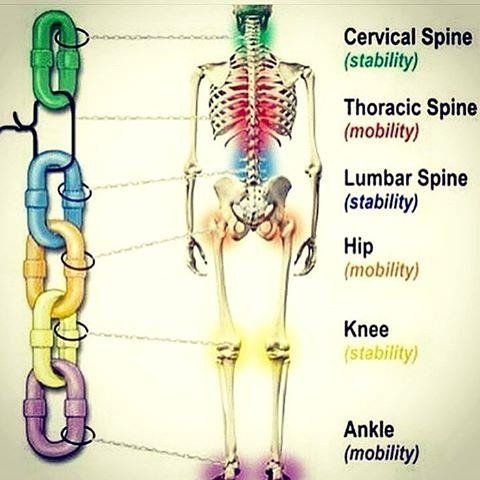Whiplash & Atlas
The number of injuries to the neck and neck vertebrae has increased considerably in recent decades. This increase is mainly due to traffic accidents and fierce contact sports.
Personal injury can be sustained in a simple traffic jam, where you hardly have any car damage. You must consider the consequences of a high-speed collision.
People often speak of a whiplash in these situations.
Can you prevent whiplash?
Whiplash is hard to prevent in a traffic accident, you can only protect yourself by limiting damage. You can adjust your headrest properly to the "correct" height, so that the top of the headrest is at least equal to the ear or higher.
What is a Whiplash anyway?
What we can read everywhere is that the whiplash is a centrifugal / whip movement of the head, while the rest of the body is still (reasonably) still.
Whiplash is an acceleration-delay mechanism
of energy transfer to the neck!
To incur a whiplash, the head does not only have to make a whip movement from the back to the front. It can just as well be a lateral or diagonal movement. After all, we are not always looking straight ahead in our car and we are not always hit from behind.
What actually happens inside our neck at that moment and why are complaints different? How is it possible that the complaints are temporary for one person and permanent for others?
Simply put, a whiplash occurs because your head gets a speed (acceleration / inertia force, laws of Newton mechanics) and your body is primarily restrained by belt. the head is then mainly held back by neck muscles and ligaments, so that your head does not slip away from your neck.
The landing strip (joint surfaces) for landing your head back is the Atlas (1st cervical vertebra). A landing of the head (5 to 7 kg) with a recoil after acceleration on the joint surfaces of a bone that weighs 50 to 60 grams is crucial for the further complaints that you will experience.
If this landing goes well, you have temporary complaints that are caused by stretching muscles and ligaments (neck strain), and we speak of happiness in the event of an accident.
If this landing, for whatever reason (spoken in micro millimeters), lands next to its anatomical position (red on illustrations), we speak of a sub-luxation of the Atlas (getting out of ideal position).
You can read everything about the Atlas here
Not resolved Atlas sub-luxation >> permanent Whiplash complaints!
Can I see Whiplash on MRI?
If the injury suffered during a whiplash is limited to stretched muscles and ligaments, it is not easy to see on an MRI scan, but that does not mean that there is no damage / change.
On an MRI scan you can see more than just fractures and neurological damage, because you can also see a sub-luxation of the atlas. Certainly if you have persistent complaints over time, it is advisable to make an MRI scan of your cervical vertebrae including the atlas.
With a lateral whiplash you can see faster that the atlas has moved out of its ideal anatomical position because, from this included, the lower jaw is not in the way.
Why is the Atlas the weakest link in our spine?
An artery (a.vertebralis) passes through the Atlas that makes a curve exactly at this point before the artery enters the area of our brain, where it takes care of about 40% of the brain circulation.
Tilting the Atlas by 1-4 millimeters up or down (along the occipital bone), or 1-3 degrees in terms of rotation (around C2) affects the extended brain, spinal ganglion and vertical artery.
The pressure that arises on the extended brain and spinal ganglion C1 and C2 interferes with the normal transfer of nerve impulses between the head (brain) and the body. With the pressure retracting and turning of the vertical artery, circulation through the vertebral artery is impeded and thus the normal blood flow to the brain is impeded (including oxygen shortage).
In no time after a heavier whiplash, shifting of the entire spine also starts. On an MRI scan it is then often seen that the neck vertebrae also do not close anatomically.
A shift of the Atlas activates the entire kinetic chain of spinal shifts, vertebra for vertebra, until the new equilibrium is reached.
Consequential damage after a Whiplash
If an injury sustained by a whiplash is not resolved, or rather if the Atlas is not returned to its anatomical location, it may eventually lead to nerve and brain damage. Certainly in the case of the whiplash that occurs most frequently in car accidents (higher acceleration)
In the case of chronic pain, usually defined as pain lasting longer than 6 months, the nervous system itself can become sensitive and the feeling of pain cannot meaningful purpose.
If this continues for a longer period of time, damage to the affected nerve will occur, but this damage does not have to occur in the cervical vertebrae area. Nerves can therefore become irritated and pinched by the shifted Atlas, certainly when the cervical vertebrae follow this shift and also get out of their anatomical position.
More than 50% of the pain in the neck, shoulder, head and arm are related to the spine and the resulting disruption of the body's bio-mechanical function.
Late whiplash syndrome has actually not been resolved Atlas sub-luxation!
Permanent complaints after a whiplash or late whiplash syndrome
Chronic whiplash or "Late whiplash syndrome" includes the collection of symptoms and signs that occur in a patient after a period of normal recovery. Even in studies from 1995 it appears that 7 years after a whiplash injury, people suffer from these Late whiplash complaints.
Which is actually self-evident, when we know that Whiplash complaints are caused by Atlas sub-luxation and Atlas can take the entire spine out of balance.
At that time, fewer symptoms were attributed to this condition than today, but damage is clear.
- headache, migraine, tension headache, cervical migraine
- radicular deficiency, loss of passenger (in certain body positions tingling and deaf feelings)
- cranial nerve / brain stem disorders,
- cervical spine osteoarthritis, - fatigue,
- sleep disorders,
- blurred vision,
- forgetfulness,
- anxiety , worries and stress (research: Radanov et al., 1995)
One of the biggest problems in diagnosing, treating or preventing whiplash disorders (WAD) is the lack of easily observable injuries. The diagnosis is determined by interpreting symptoms that may have psychosomatic aspects.
Law of Biomechanics and Statics
As a vertical structure, we humans unfortunately cannot escape the influence of natural laws.
According to this knowledge, a balance must be restored as soon as possible by creating a new vertical axis.
Because the vertebral column responds to the atlas shift from bottom to top, the lower part of the vertebral column first notices the shift in the vertical axis and responds to this shift by making an opposite shift of the pelvis (correction to maintain equilibrium) .
Through this maintenance of equilibrium and balance, nerve irritations and squeezes can occur along the entire spine, and therefore throughout the body.
If, after an accident (whiplash), you suddenly feel shifts in your pelvis, you feel a balance correction. The enforcement mechanism has been activated to restore balance. The atlas is then naturally taken out of its ideal position and the compensation chain is then activated.
Primary Whiplash / Atlas complaints
The brain suffers faster because the brain (as described above) is dependent on the blood supply. The displacement of the cervical vertebrae, even if it is less than 1 millimeter, creates an imbalance in the blood-oxygen supply. Most people have initially to deal with complaints such as:
- Pressure on the skull,
- Sensation of pulsation,
- Drowsiness, as if you just don't get clear,
- Headache,
- Pain in the neck,
- Complaints and back pain , neck and shoulders.
And later, because the problem is not solved, people notice that they experience problems during daily functioning, such as:
- Concentration problems,
- Fatigue,
- Dizziness,
- Forgetful,
- Poor sleep etc etc Practical experience shows that these symptoms disappear first.
For some customers, the majority of these complaints disappeared immediately. I also belong to this group.
'With me the feeling of pressure on the skull, the whiteness and the feeling of pulsation was immediately gone because it was caused by so-called neurological (oxygen) deficiency. However, it took a few days for the dizziness and balance disorder to disappear. I also had to be patient for forgetfulness and concentration problems. '
The complaints that are caused by a short-term disruption in the blood circulation are resolved faster than those caused by a tormented nerve (damage to the nerve due to an oxygen deficiency, irritation or pinching).
This is simply because nerves need some time to recover.
Why is Atlas massage so necessary?
By aligning the atlas you correct the entire vertebral column, because your equilibrium enforcement mechanism is activated again.
With this you release your body from the pressure on the most important part of the nervous system (the extended brain), which regulates the general muscle tension and all other important functions in the body.
As a result, the nervous system recovers faster and the body's recovery to its previous normal state of health is put into effect.
As you could read on the homepage, lasting sub-luxation of Atlas after years. causes the sea of complaints and thus has a huge impact on our entire body and therefore on our character and our lives.
Only with the idea that your or your loved one's complaints could arise as a result is sufficient reason to have it checked.
If you want to know more about how a whiplash can cause a variety of conditions, read Migraine & Atlas.
If you want to read more about the HumanUp method for aligning the atlas, click here.
After a 15-minute free and no-obligation conversation, you know whether your Atlas is out of its ideal position.
NB The information collected on this site is purely for information purposes. In no case and under no circumstances do we want to exclude or replace medical or healthcare.



